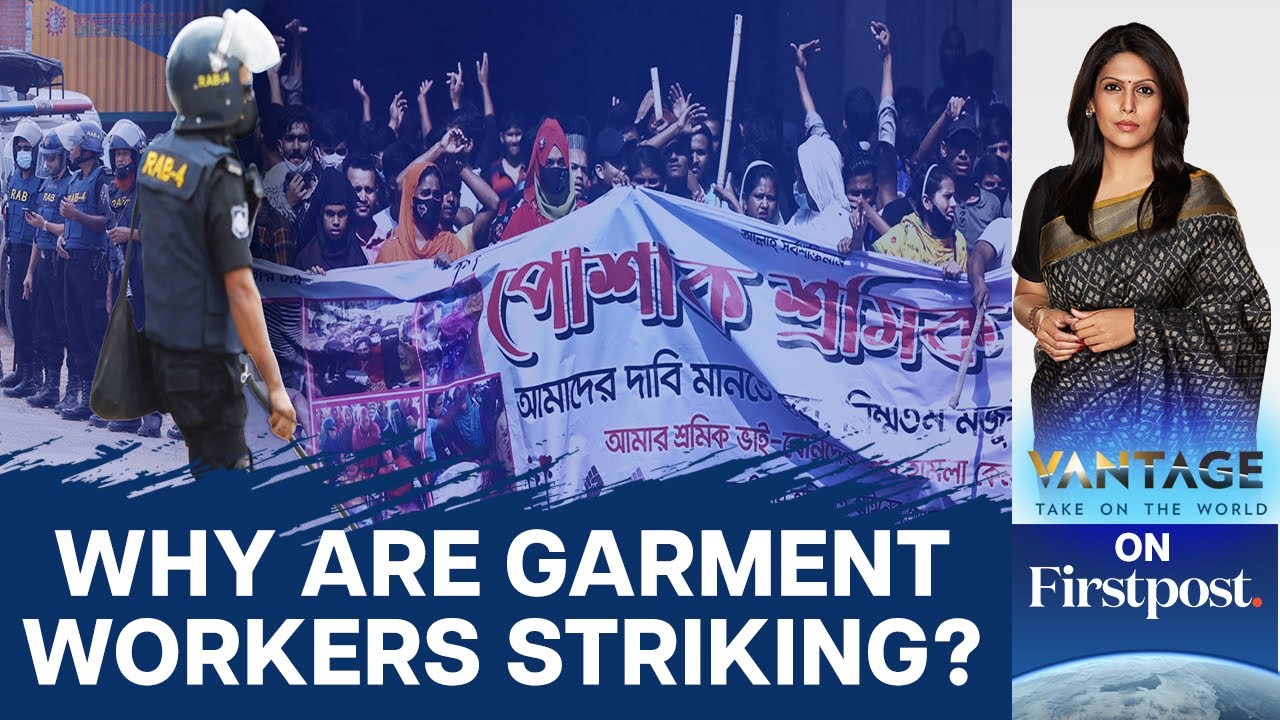Bangladesh economy is currently facing an existential crisis with its garment industry at the forefront of this turmoil. The country’s garment workers have gone on strike leading to the closure of around 600 factories causing exports to slow down. The situation has escalated with street violence and at least three people have been killed in the clashes. The striking workers demand better wages setting the stage for a complex socio-economic and political standoff. Wage dispute Bangladesh garment workers currently earn a minimum wage of $75 per month as set in 2018. However, in 2023, the government proposed an increase to $90 per month, which was met with rejection by the factory workers. Subsequently, the government offered a 56 per cent hike, equivalent to $113 per month. Yet, this proposal was also rejected by the workers. Their primary demand is a wage of $208 per month, which is nearly three times their current earnings. A union leader Taslima Akter said, “In this inflated market it’s a travesty to the workers. It’s evident that in the new wage proposal, our government and the owners only looked into their own interests, ignoring the fact of how the workers will live at this time. We, the garment workers movement and 4 million workers reject this proposal.” The government in Dhaka faces a challenging decision-making process due to multiple factors. First, an upcoming election makes it critical for the government not to alienate a significant voting bloc. Furthermore, international fast-fashion giants like H&M, Gap and Zara rely on Bangladesh for its lower labour costs. However, prolonged strikes can disrupt production, hinder exports and lead to negative publicity. The garment industry is the lifeline of Bangladesh’s economy constituting 85 per cent of the country’s exports, contributing 28 per cent to the GDP and employing approximately four million people, predominantly women. This sector has played a pivotal role in Bangladesh’s economic success and its resolution is of utmost importance. The garment workers’ demands are driven by the high inflation rate in Bangladesh, which was 9.9 per cent in October with food prices surging by more than 12 per cent. The workers argue that their current wages are insufficient to meet basic living expenses including rent, food and children’s education. A comparison with minimum wages in other major garment-producing countries such as Vietnam, China, Turkey and Indonesia reveals that Bangladeshi workers are at a disadvantage. “Do you see the price of potato and onion in the market? The new hike will not compensate for the deficit of our needs. It should be raised further. We have to pay rent, food and children’s education. The market economy is on fire. How can we go on like this?” asked 37-year-old garment worker Rahima Begum. Finding middle ground Dhaka must find a middle ground to address this crisis. Workers need relief from rising inflation while the country also requires foreign investments. It should not be a choice between these two but a balanced approach that ensures the well-being of workers and sustains the vital garment industry. Bangladesh’s economy is at a critical juncture with the garment industry’s future hanging in the balance. As the government, workers and international corporations weigh their options, finding a sustainable resolution to this crisis is essential for the prosperity of the country and the well-being of its citizens. The coming decisions will shape the path of Bangladesh’s economy for years to come. Views expressed in the above piece are personal and solely that of the author. They do not necessarily reflect Firstpost’s views. Read all the Latest News , Trending News , Cricket News , Bollywood News , India News and Entertainment News here. Follow us on Facebook, Twitter and Instagram.
Bangladesh’s economy is at a critical juncture with the garment industry’s future hanging in the balance
Advertisement
End of Article


)

)
)
)
)
)
)
)
)



